
How to Use WeMos LOLIN32 V1.0.0: Examples, Pinouts, and Specs
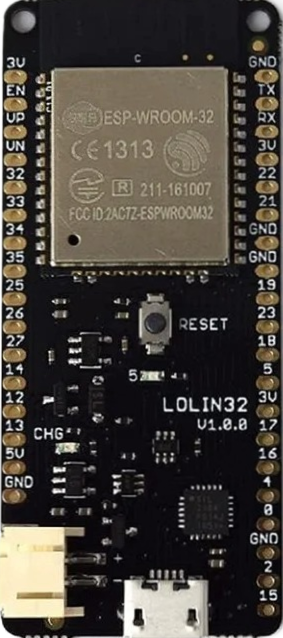
 Design with WeMos LOLIN32 V1.0.0 in Cirkit Designer
Design with WeMos LOLIN32 V1.0.0 in Cirkit DesignerIntroduction
The WeMos LOLIN32 V1.0.0 is a powerful and versatile development board based on the ESP32 microcontroller, manufactured by Wemos.cc. It features integrated Wi-Fi and Bluetooth capabilities, making it an excellent choice for Internet of Things (IoT) projects, wireless communication, and rapid prototyping. With its compact design and rich set of features, the LOLIN32 is suitable for both beginners and experienced developers.
Explore Projects Built with WeMos LOLIN32 V1.0.0
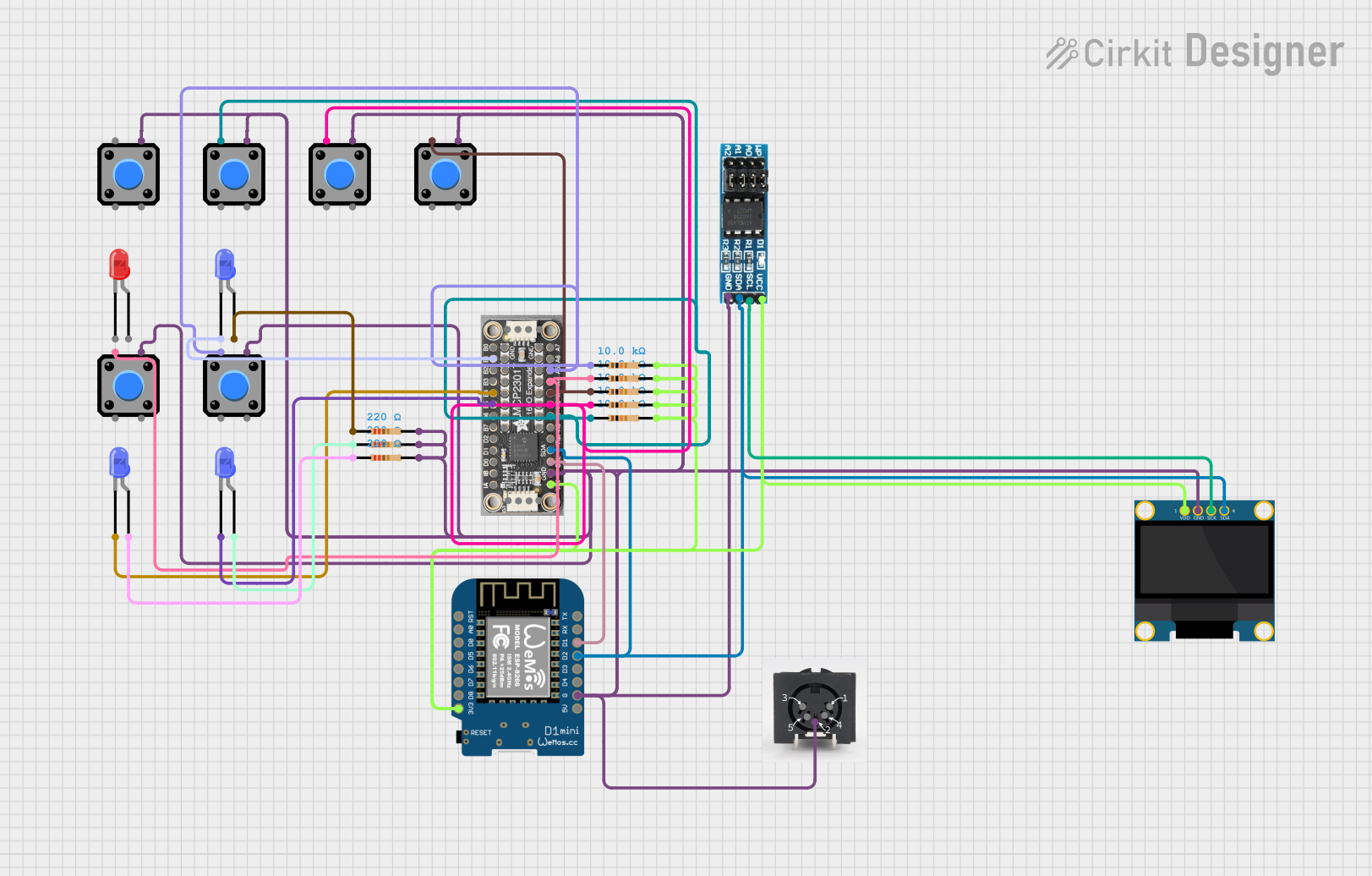
 Open Project in Cirkit Designer
Open Project in Cirkit Designer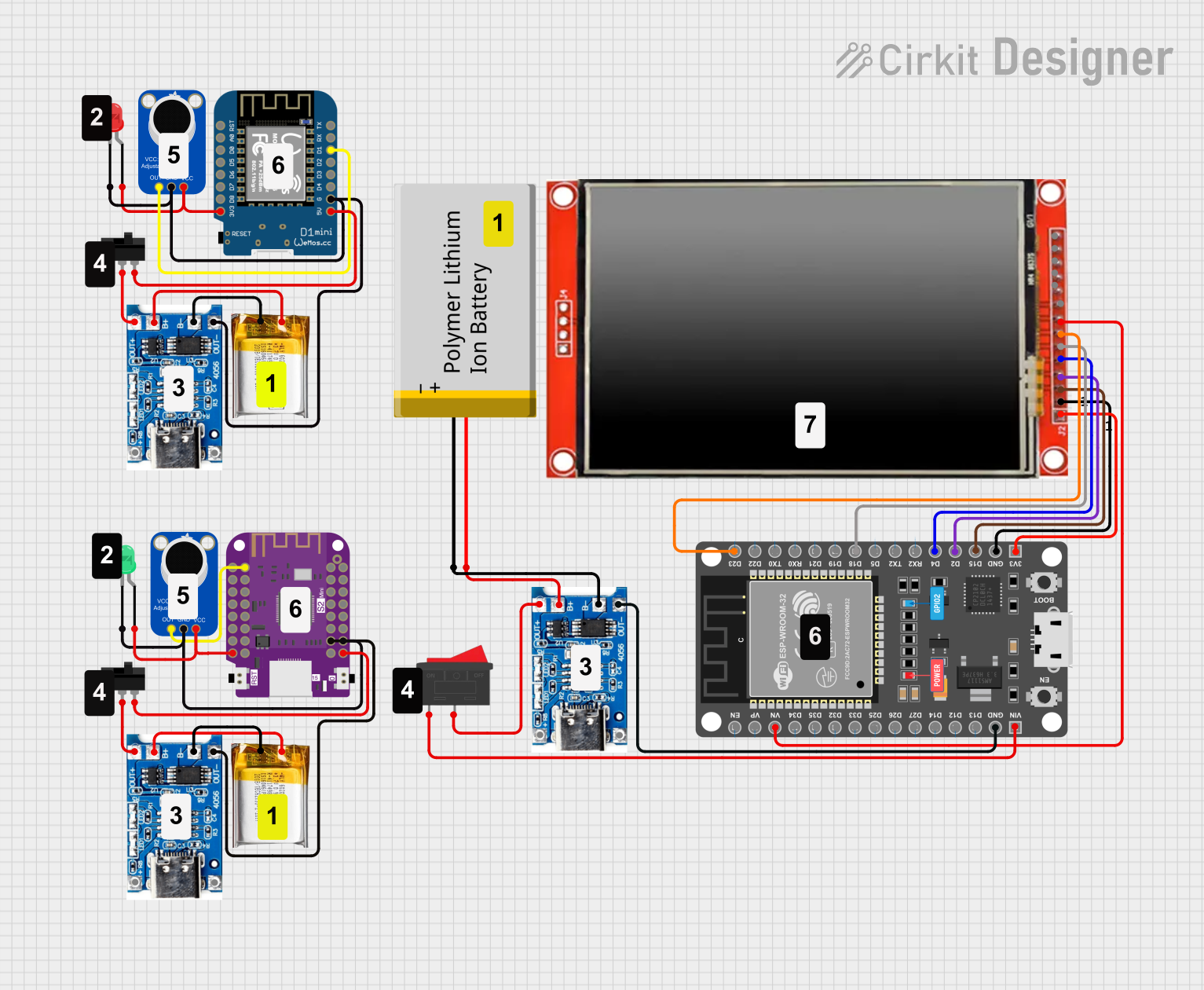
 Open Project in Cirkit Designer
Open Project in Cirkit Designer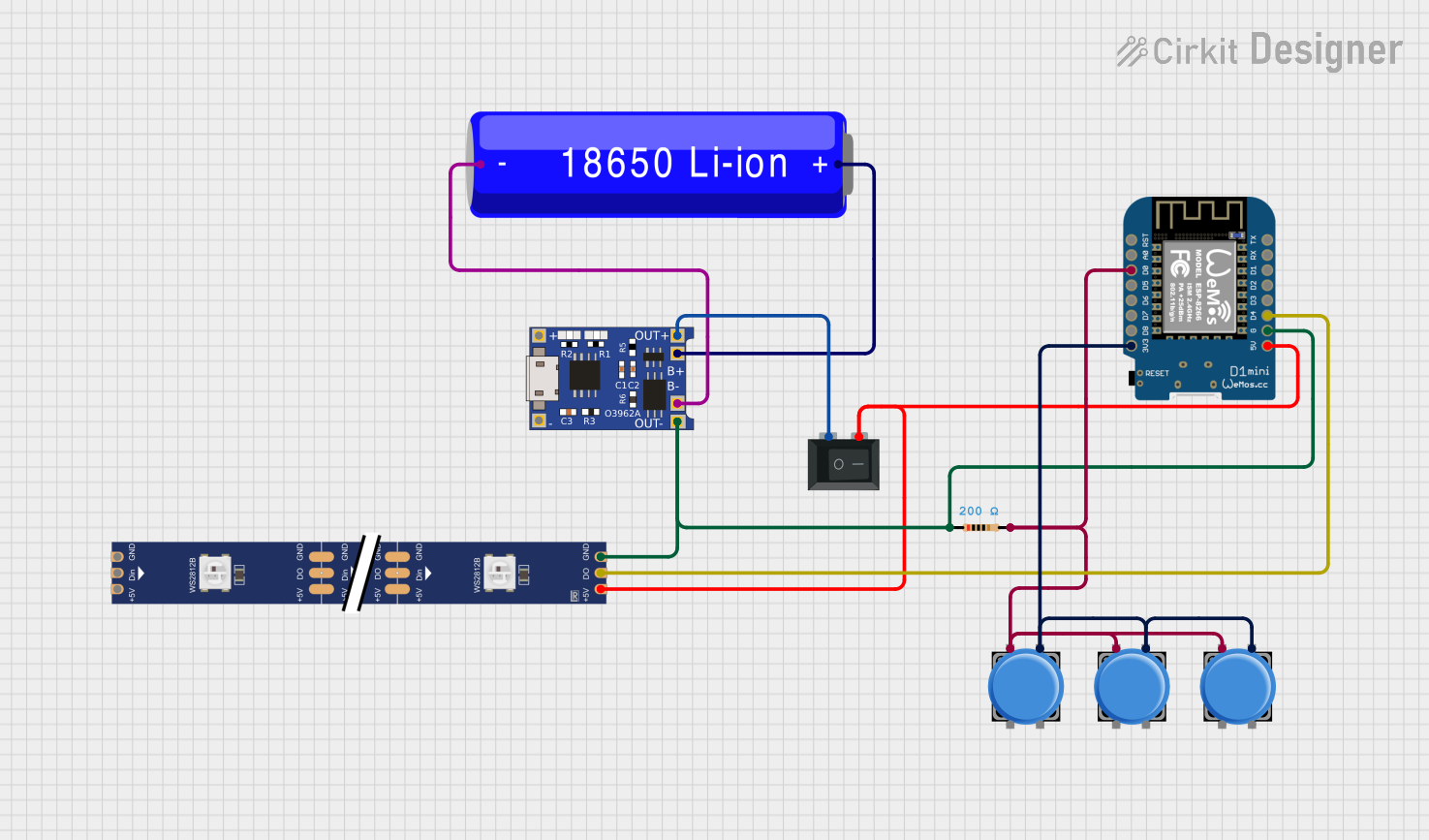
 Open Project in Cirkit Designer
Open Project in Cirkit Designer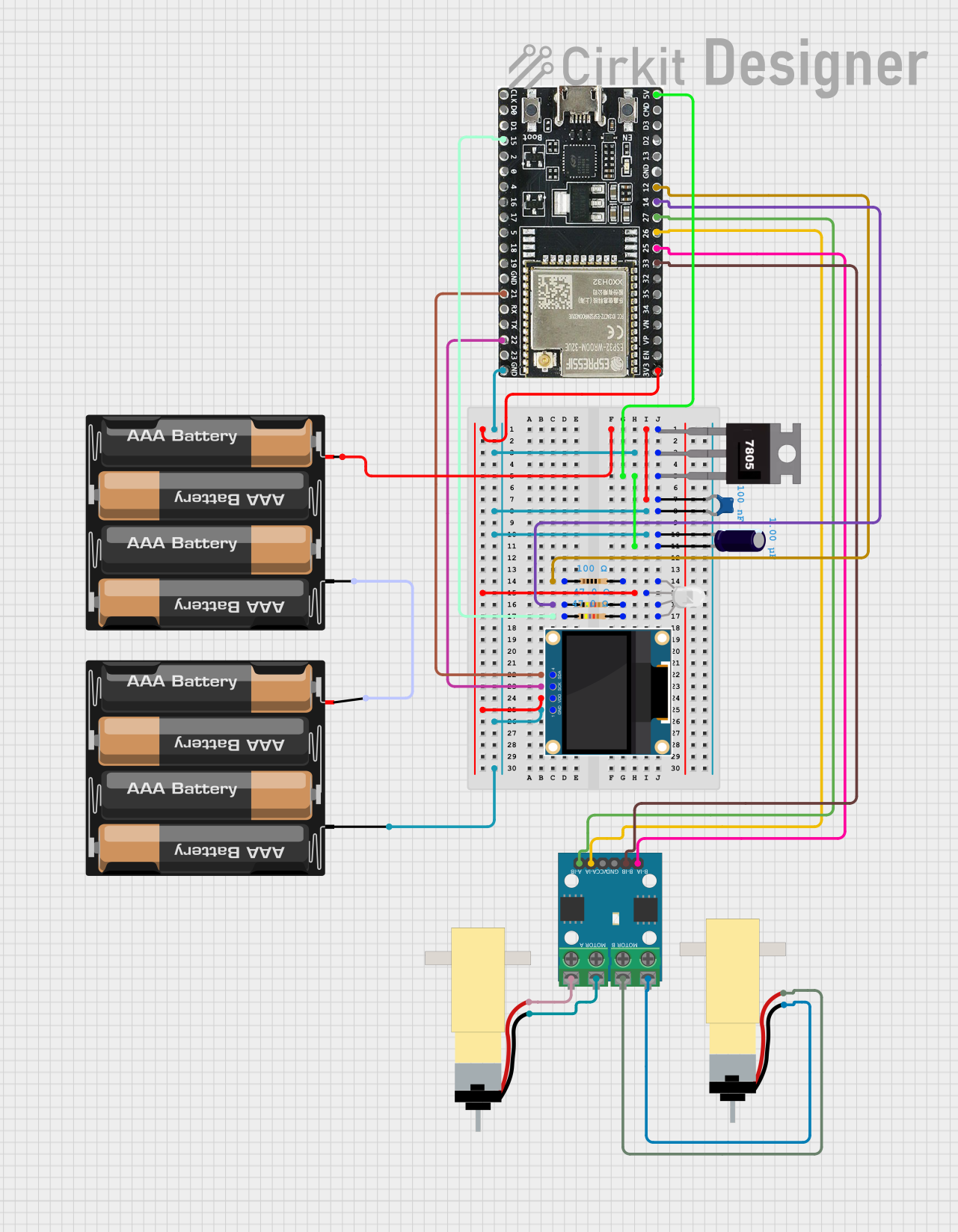
 Open Project in Cirkit Designer
Open Project in Cirkit DesignerExplore Projects Built with WeMos LOLIN32 V1.0.0

 Open Project in Cirkit Designer
Open Project in Cirkit Designer
 Open Project in Cirkit Designer
Open Project in Cirkit Designer
 Open Project in Cirkit Designer
Open Project in Cirkit Designer
 Open Project in Cirkit Designer
Open Project in Cirkit DesignerCommon Applications and Use Cases
- IoT devices and smart home automation
- Wireless sensor networks
- Wearable technology
- Robotics and remote control systems
- Prototyping and educational projects
Technical Specifications
The following table outlines the key technical details of the WeMos LOLIN32 V1.0.0:
| Specification | Details |
|---|---|
| Microcontroller | ESP32 (dual-core, 32-bit, Xtensa LX6) |
| Clock Speed | Up to 240 MHz |
| Flash Memory | 4 MB (SPI Flash) |
| SRAM | 520 KB |
| Wireless Connectivity | Wi-Fi 802.11 b/g/n, Bluetooth v4.2 + BLE |
| Operating Voltage | 3.3V |
| Input Voltage (VIN) | 5V (via USB or VIN pin) |
| GPIO Pins | 26 (including ADC, DAC, PWM, I2C, SPI, UART) |
| ADC Channels | 18 (12-bit resolution) |
| DAC Channels | 2 (8-bit resolution) |
| USB Interface | Micro-USB |
| Dimensions | 50 mm x 25.4 mm |
| Power Consumption | Low-power modes available (deep sleep current ~10 µA) |
Pin Configuration and Descriptions
The LOLIN32 features a 26-pin GPIO header. Below is a table summarizing the pin configuration:
| Pin | Name | Function | Description |
|---|---|---|---|
| 1 | VIN | Power Input | Accepts 5V input for powering the board. |
| 2 | GND | Ground | Common ground for the circuit. |
| 3 | 3V3 | 3.3V Output | Regulated 3.3V output from the onboard regulator. |
| 4-19 | GPIO0-GPIO25 | General Purpose I/O | Configurable as digital I/O, ADC, PWM, etc. |
| 20 | EN | Enable | Enables or disables the board. |
| 21 | TXD0 | UART0 Transmit | UART0 TX pin for serial communication. |
| 22 | RXD0 | UART0 Receive | UART0 RX pin for serial communication. |
| 23 | DAC1 | Digital-to-Analog Converter Channel 1 | Outputs analog signals. |
| 24 | DAC2 | Digital-to-Analog Converter Channel 2 | Outputs analog signals. |
| 25 | ADC0-ADC17 | Analog-to-Digital Converter Channels | Reads analog signals (12-bit resolution). |
| 26 | RST | Reset | Resets the microcontroller. |
Usage Instructions
How to Use the Component in a Circuit
Powering the Board:
- Connect the board to a computer or USB power source using a Micro-USB cable.
- Alternatively, supply 5V to the VIN pin and connect GND to the ground of your circuit.
Programming the Board:
- Install the Arduino IDE and add the ESP32 board support package.
- Select "LOLIN32" as the board in the Arduino IDE.
- Connect the board to your computer via USB and upload your code.
Connecting Peripherals:
- Use the GPIO pins to connect sensors, actuators, or other peripherals.
- Ensure that the voltage levels of connected devices are compatible with the 3.3V logic of the LOLIN32.
Important Considerations and Best Practices
- Voltage Levels: The GPIO pins operate at 3.3V. Avoid applying 5V directly to the pins to prevent damage.
- Power Supply: Use a stable power source to avoid unexpected resets or instability.
- Deep Sleep Mode: Utilize the deep sleep mode for battery-powered applications to minimize power consumption.
- Pin Multiplexing: Some pins have multiple functions (e.g., ADC, UART, PWM). Refer to the ESP32 datasheet to avoid conflicts.
Example Code for Arduino UNO Integration
Below is an example of how to blink an LED connected to GPIO2 on the LOLIN32:
// Example: Blink an LED on GPIO2 of the LOLIN32
// Define the GPIO pin for the LED
const int ledPin = 2;
void setup() {
// Initialize the GPIO pin as an output
pinMode(ledPin, OUTPUT);
}
void loop() {
// Turn the LED on
digitalWrite(ledPin, HIGH);
delay(1000); // Wait for 1 second
// Turn the LED off
digitalWrite(ledPin, LOW);
delay(1000); // Wait for 1 second
}
Troubleshooting and FAQs
Common Issues Users Might Face
Board Not Detected by Computer:
- Ensure the USB cable is functional and supports data transfer.
- Install the correct USB-to-serial driver for the LOLIN32.
Upload Fails in Arduino IDE:
- Check that the correct board and COM port are selected in the IDE.
- Press and hold the "BOOT" button on the board while uploading the code.
Wi-Fi Connection Issues:
- Verify the SSID and password in your code.
- Ensure the Wi-Fi network is within range and operational.
Unstable Operation:
- Use a stable power source with sufficient current capacity.
- Avoid using pins with conflicting functions.
Solutions and Tips for Troubleshooting
- Reset the Board: Press the "RST" button to reset the microcontroller.
- Check Pin Assignments: Double-check your circuit connections and pin assignments in the code.
- Consult the Datasheet: Refer to the ESP32 datasheet for detailed information on pin functions and electrical characteristics.
- Update Firmware: Ensure the ESP32 firmware and Arduino IDE are up to date.
By following this documentation, you can effectively utilize the WeMos LOLIN32 V1.0.0 for your projects and overcome common challenges.